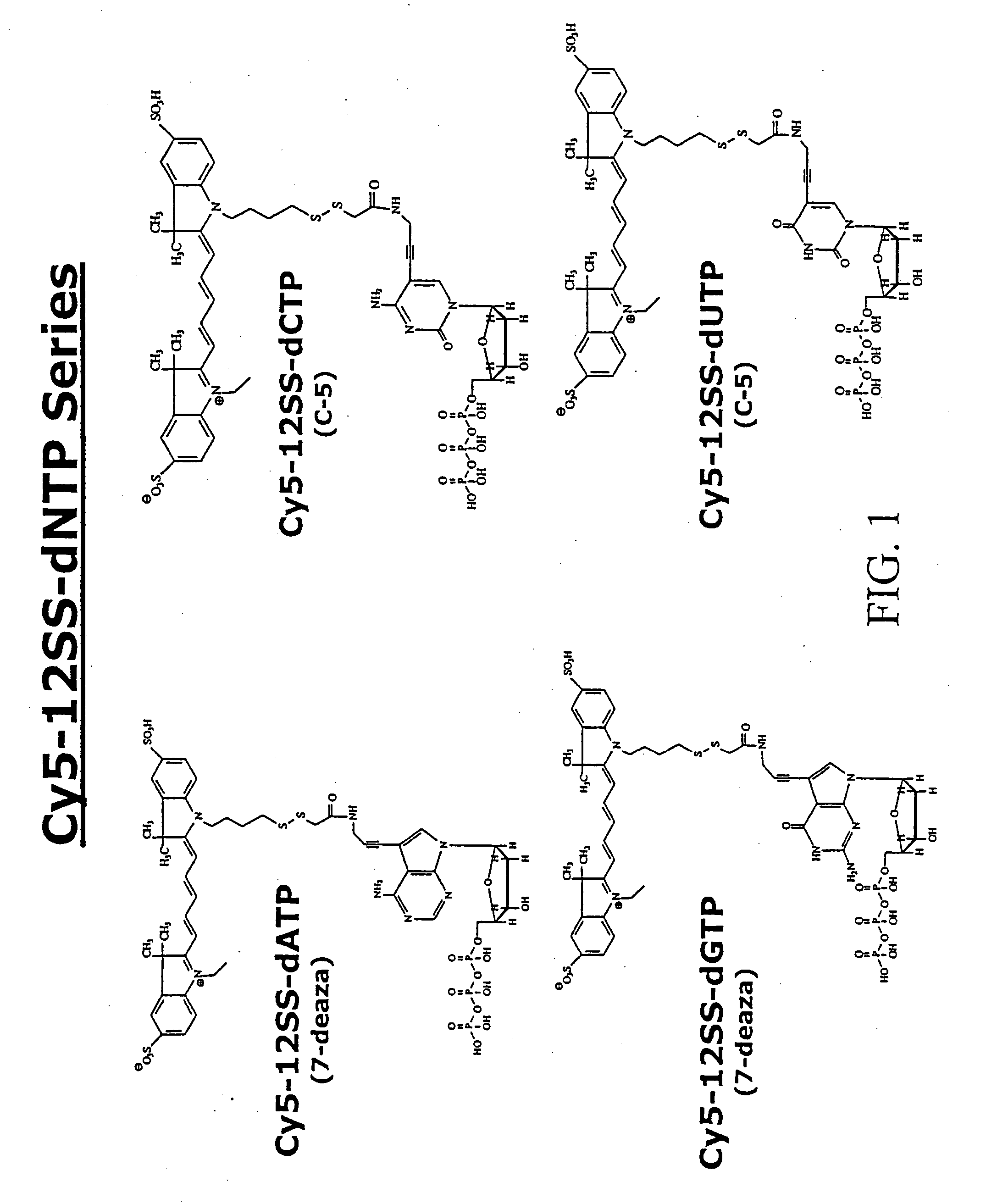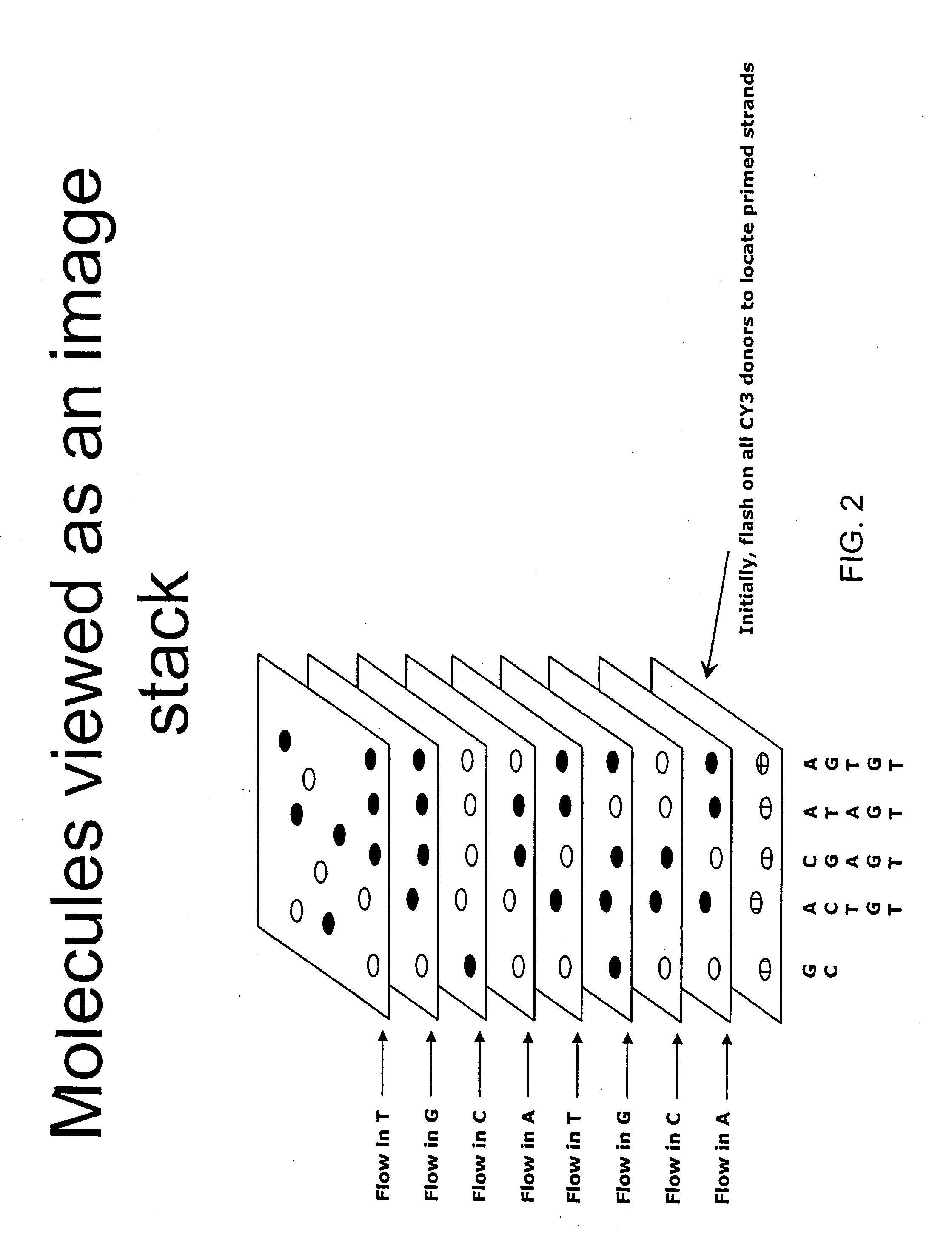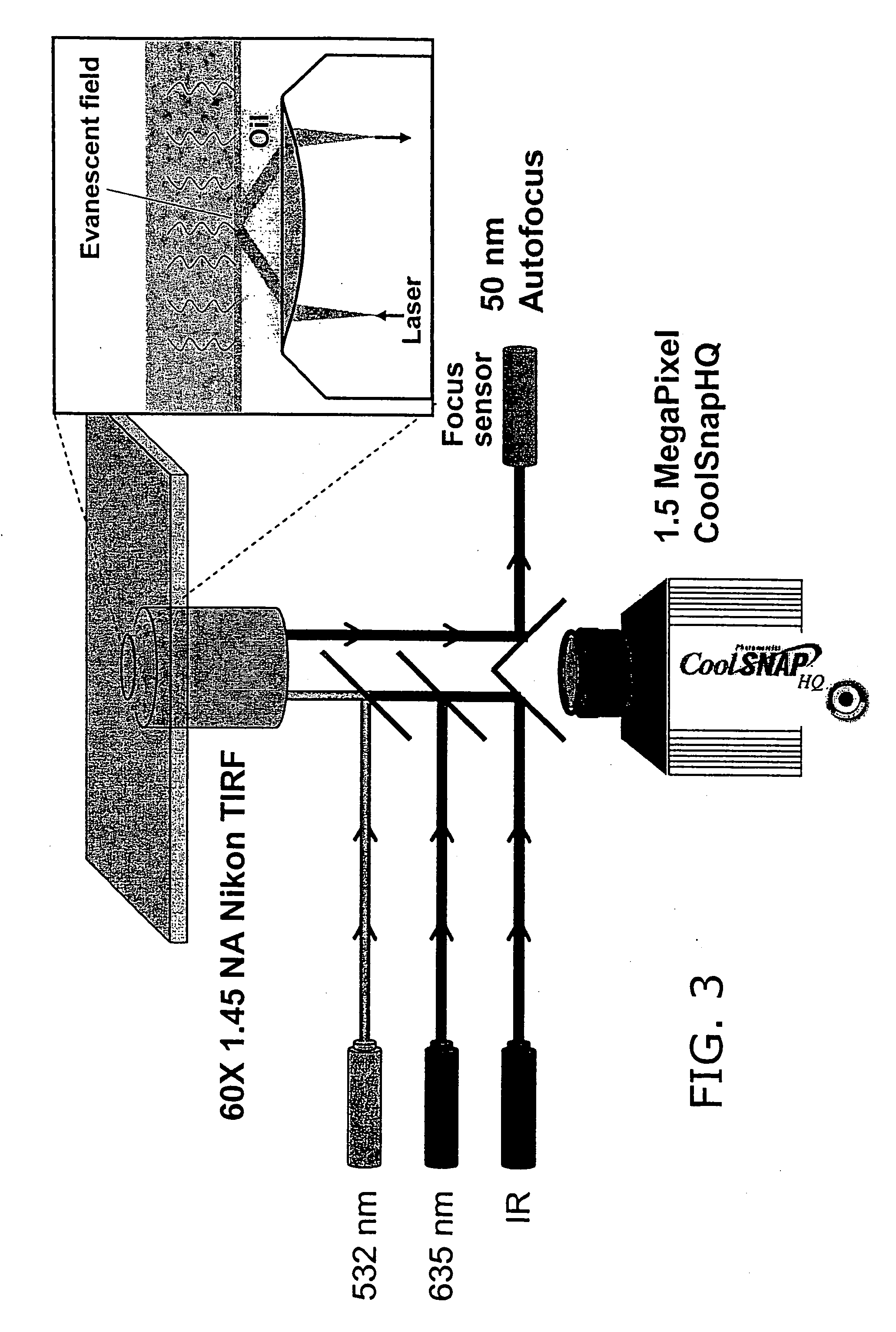Consecutive base single molecule sequencing
a single molecule, long-run technology, applied in the direction of specific use bioreactors/fermenters, organic chemistry, after-treatment of biomass, etc., can solve the problem that bulk sequencing is not useful for identification, and achieve the effect of facilitating tissue engineering, determining phylogenic relationships, and elucidating cell differentiation
- Summary
- Abstract
- Description
- Claims
- Application Information
AI Technical Summary
Benefits of technology
Problems solved by technology
Method used
Image
Examples
example
[0060] The 7249 nucleotide genome of the bacteriophage M13mp18 was sequenced using single molecule methods of the invention. Purified, single-stranded viral M13mp18 genomic DNA was obtained from New England Biolabs. Approximately 25 μg of M13 DNA was digested to an average fragment size of 40 by with 0.1 U Dnase I (New England Biolabs) for 10 minutes at 37° C. Digested DNA fragment sizes were estimated by running an aliquot of the digestion mixture on a precast denaturing (TBE-Urea) 10% polyacrylamide gel (Novagen) and staining with SYBR Gold (Invitrogen / Molecular Probes). T he DNase I-digested genomic DNA was filtered through a YM10 ultrafiltration spin column (Millipore) to remove small digestion products less than about 30 nt. Approximately 20 pmol of the filtered DNase I digest was then polyadenylated with terminal transferase according to known methods (Roychoudhury, R and Wu, R. 1980, Terminal transferase-catalyzed addition of nucleotides to the 3′ termini of DNA. Methods Enzy...
PUM
| Property | Measurement | Unit |
|---|---|---|
| diameter | aaaaa | aaaaa |
| volume | aaaaa | aaaaa |
| pH | aaaaa | aaaaa |
Abstract
Description
Claims
Application Information
 Login to View More
Login to View More - R&D
- Intellectual Property
- Life Sciences
- Materials
- Tech Scout
- Unparalleled Data Quality
- Higher Quality Content
- 60% Fewer Hallucinations
Browse by: Latest US Patents, China's latest patents, Technical Efficacy Thesaurus, Application Domain, Technology Topic, Popular Technical Reports.
© 2025 PatSnap. All rights reserved.Legal|Privacy policy|Modern Slavery Act Transparency Statement|Sitemap|About US| Contact US: help@patsnap.com



